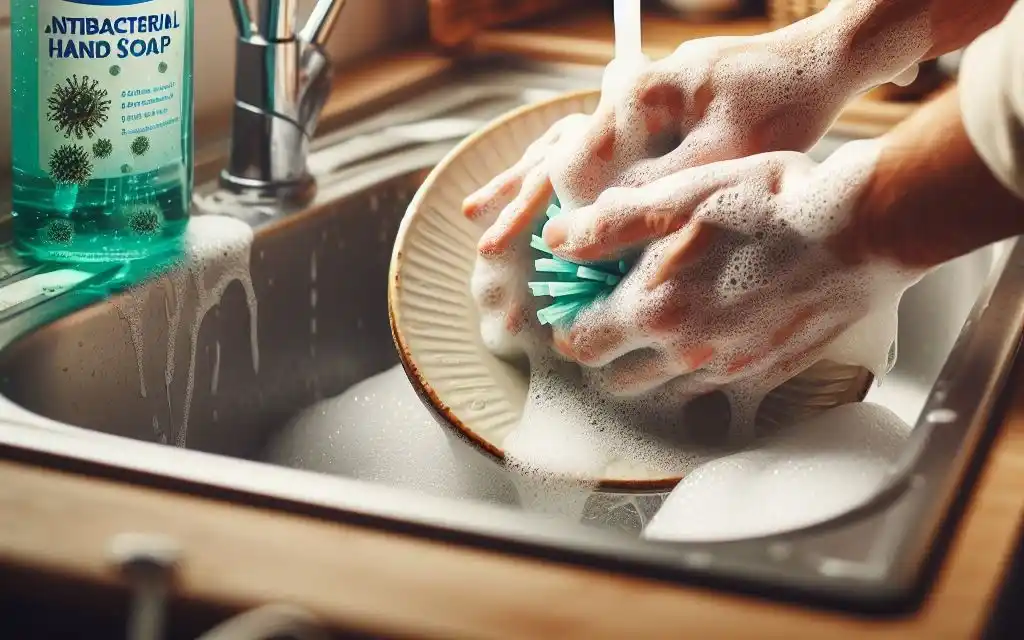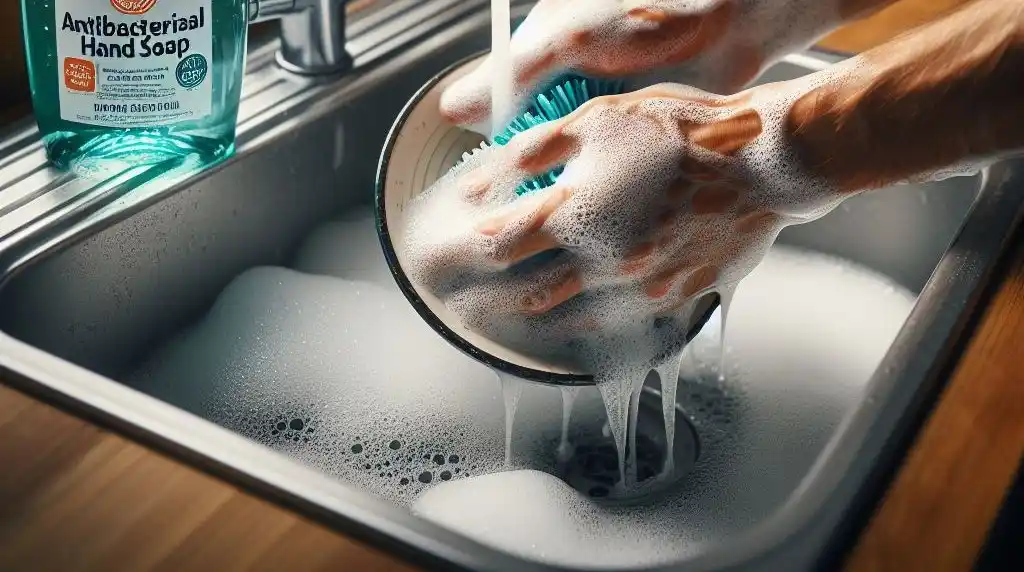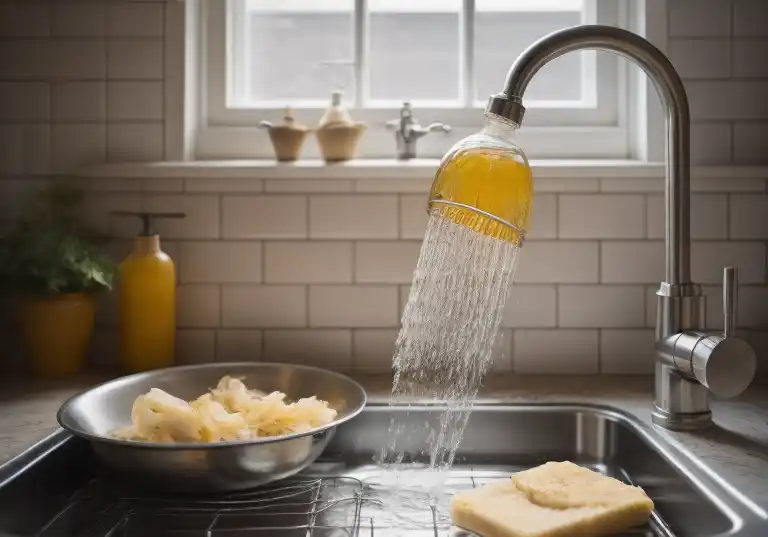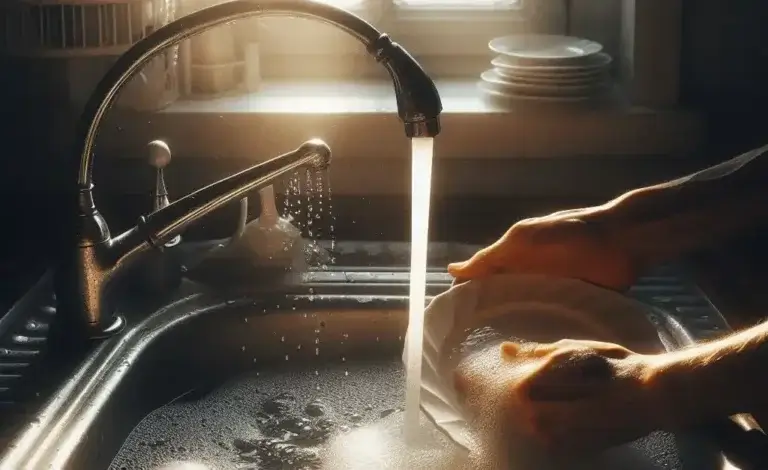Can You Use Liquid Hand Soap to Wash Dishes? Full Guide
Have you ever found yourself facing a sink full of dirty dishes only to discover that you’ve run out of dish soap? While no one wants greasy, grimy dishes piling up, making an emergency dish soap run to the store isn’t always convenient. In those moments, you may wonder – can you use liquid hand soap to wash dishes instead?
While hand soap and dish soap have some overlap, they are designed for different purposes. Dish soap is specially formulated to cut through food grease and debris. Hand soap is gentler, and focuses more on germ removal than removing stuck-on food.
However, when you’re in a pinch, liquid hand soap can work for washing dishes. This article will dive into Can You Use Liquid Hand Soap to Wash Dishes, including:
- Can you use liquid hand soap to wash dishes?
- The differences between hand soap and dish soap
- Using hand soap for dishes in emergencies
- Tips for getting dishes extra clean with hand soap
- Potential downsides of using hand soap on dishes regularly
Table of Contents
Can You Use Liquid Hand Soap to Wash Dishes?

The short answer – yes, you can use liquid hand soap to wash dishes. Hand soap contains surfactants and other cleaning agents that can break down oils and lift away food particles when combined with water.
While hand soap is milder compared to formulas designed for dishes, it can still effectively clean your plates, cups, and silverware when needed.
Using a small amount of antibacterial liquid hand soap to handwash dishes, scrubbing thoroughly, and rinsing well can leave dishes hygienically clean. The key is to be diligent about removing all stuck-on food since hand soap is less powerful against grease.
So if you’ve run out of dish soap, don’t panic! Look under your bathroom sink for some liquid hand soap and get scrubbing.
Key Differences Between Hand Soap and Dish Soap

While hand soap can work in a pinch, there are some important differences between soaps designed for hands versus dishes:
Ingredients
- Dish soap contains stronger surfactants: Cleaning agents that cut through grease, lift dirt and bubble away debris when mixed with water. Dish soap formulas have extra grease-fighting power.
- Hand soap focuses more on germ killing: Contains antibacterial and antifungal ingredients to sanitize hands. May not remove food grease as effectively.
- Dish soap includes degreasing agents: Ingredients like ammonia or bleach help dissolve stuck-on food particles. Hand soap is gentler.
- Hand soap often has moisturizers: Formulas hydrate skin and feature skin-soothing ingredients like glycerin or aloe vera. Dish soaps aim to clean rather than condition.
- Dish soap resists sudsing: Special additives prevent giant soap bubbles that can leave behind residue. Hand soap often suds more since bubble power isn’t a concern.
In a nutshell, dish soap contains more powerful grease-fighting ingredients while hand soap focuses more on germ removal and skin conditioning.
Using Hand Soap for Dishes in a Pinch
While hand soap isn’t the first choice for dishes, it can work well for occasional use in a pinch:
When You’ve Run Out of Dish Soap
If you suddenly realize you’re completely out of dish liquid, hand soap can tide you over for a day or two until you can buy more. To make it work optimally:
- Use hot water, as high a temperature as you can stand, to help cut grease
- Let dishes soak for 5-10 minutes before scrubbing
- Use a soft brush and elbow grease to remove stuck-on food
- Rinse very thoroughly after washing to prevent residue
- Repeat the wash cycle if needed to remove all debris
For Lightly Soiled Dishes
Hand soap works better for lightly soiled items that don’t have caked or baked-on food. It can readily handle:
- Freshly dirtied plates and bowls
- Grease-free glasses and mugs
- Silverware with minimal food remnants
For these types of dishes, hand soap often removes debris with normal scrubbing and rinsing.
In a Secondary Sink Basin
If you have a divided sink, you can use hand soap in one section for lightly soiled items. Reserve the dish soap for the other basin to tackle pans and heavily soiled dishes that need heavy-duty grease fighting.
This helps hand soap work optimally while still keeping pots and pans sparkling clean with regular dish liquid.
Tips for Getting Dishes Extra Clean With Hand Soap

While gentle, hand soap can still effectively clean dishes with a little extra effort. Here are some tips:
Hot Water is Your Friend
Heat helps dissolve and loosen greasy buildup so use the hottest water you can tolerate. For handwashing, a temperature of about 130°F is ideal.
Soak Before Scrubbing
Letting dishes sit for 5-10 minutes in hot, soapy water allows the soap to penetrate and soften food debris before scrubbing.
Use a Soft Dish Brush
A gentle brush helps lift food particles without scratching. Apply light pressure and use circular motions for maximum cleaning power.
Add Baking Soda
For extra scrubbing power, make a paste with baking soda and water. Let it set for a few minutes before rinsing – baking soda is a mild abrasive that breaks up gunk.
Don’t Rinse With Cold Water
Stick with hot water. Lower temperatures can cause fats in food residue to congeal onto dishes instead of rinsing away completely.
Potential Downsides of Using Hand Soap Regularly
While liquid hand soap works nicely for occasional use, there are some drawbacks to using it daily long-term:
- May not remove stuck-on food or grease fully
- More scrubbing effort is required without enhanced grease-cutting ingredients
- Possible residue or filming from extra sudsing
- The milder formula may allow more bacteria to remain on dishes over time
- Skin irritation is possible from frequent hand submersion without built-in conditioners
Essentially, while hand soap can work, dish soap is specially designed to be the MVP of cleaning dishes effectively each day. The powerful surfactants penetrate and remove debris that hand soap leaves behind.
For sparkling clean dishes without residue or the need for heavy scrubbing, dish soap is the clear winner. But when you’re out – hand soap saves the day!
FAQs: Using Hand Soap on Dishes
Here are answers to some frequently asked questions about using hand soap on dishes:
Is it bad or unsafe to use hand soap on dishes?
No, occasional use will not harm you. Hand soap contains many of the same basic cleaning agents as dish soap. With thorough rinsing, residues are not a safety risk.
What kind of hand soap works best?
Liquid hand soap works better than bar hand soap. Liquid formulas contain more skin conditioners but are still reasonably effective degreasers.
Can you use body wash or laundry detergent to wash dishes in a pinch?
The body wash is too mild and conditioned for regular dish duty. Laundry detergent is too harsh, difficult to rinse away fully, and can leave residues.
How much hand soap should you use per sink or dishload?
About a teaspoon of hand soap per average sink of dishes or a couple of tablespoons per full dishwasher load typically does the trick.
Should you use hot or cold water with hand soap on dishes?
Hot water, as hot as you can stand, is best. The heat helps the soap cut through oils and greasy food debris more effectively.
In Conclusion: Emergency Use Only
While milder and less conditioning than full-on dish products, liquid hand soap can work nicely to clean dishes when you unexpectedly run out of regular dish liquid.
Be sure to use hot water, thoroughly pre-rinse and soak dishes, and scrub diligently with a soft brush to remove all stuck-on food particles. The key is completely rinsing all residue away once washing is complete.
Used occasionally when your dish supply runs low, liquid antibacterial hand soap can tide you over nicely. But for regular day-to-day use, stick with regular dish detergents specifically designed to cut through food grease for sparkling results.








